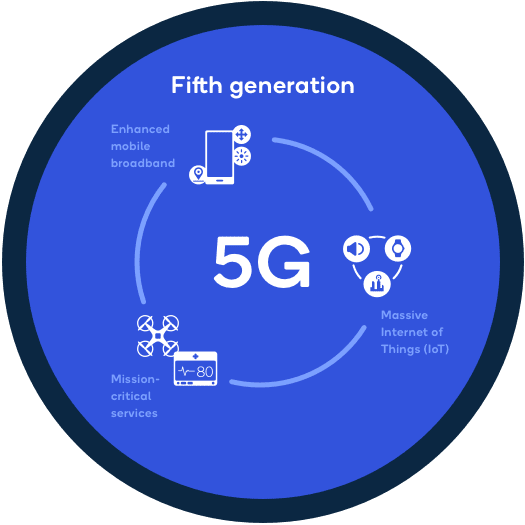The fifth-generation wireless technology, 5G, promises to revolutionize the way we connect, communicate, and operate. With significantly faster network speeds, increased data capacity, and reduced latency, 5G networks will enable a host of new applications and services that were not possible with 4G or earlier generations. The ten advancements in 5G technology listed in this article include faster network speeds, massive capacity, low latency, network slicing, edge computing, IoT connectivity, network resilience, energy efficiency, enhanced voice and video quality, and new business models. Overall, 5G technology represents a significant advancement in mobile telecommunications, and it has the potential to transform the way we live, work, and play.
10 Advancements in 5G Technology You Need to Know About
The fifth-generation wireless technology, 5G, is the latest and most advanced telecommunication technology that promises to revolutionize the way we connect, communicate, and operate. With 5G, network speeds will be significantly faster, data capacity will be increased, and latency will be reduced, enabling a host of new applications and services that were not possible with 4G or earlier generations of mobile networks.
Here are 10 advancements in 5G technology that you should know about:
1. Faster Network Speeds
5G networks promise to deliver faster speeds with lower latency, making it possible to download large files, stream videos, and play online games with minimal lag. In fact, 5G can deliver speeds of up to 20 gigabits per second compared to 4G’s maximum speed of 1 gigabit per second.
2. Massive Capacity
5G networks can handle a massive amount of connections per cell site, which means more simultaneous users can access the network without any degradation in performance. This is achieved through advanced antenna technologies and network infrastructure that can efficiently manage high volumes of data traffic.
3. Low Latency
5G networks have significantly lower latency or lag compared to 4G or earlier networks. This means that data can be processed and transmitted with minimal delay, making it possible to enable applications and services that require real-time interactions such as online gaming, remote surgery, and autonomous vehicles.
4. Network Slicing
5G networks can be segmented into multiple virtual networks or slices, each customized to meet specific requirements such as speed, capacity, and traffic type. This enables network operators to offer tailored services to different customers with varying needs, all while managing the network more efficiently.
5. Edge Computing
5G networks can support edge computing, which means that computing resources are brought closer to the user, reducing the need for data to be sent back and forth between the user and the cloud. This improves application performance and reduces latency, making it possible to enable applications such as AI-powered drones and augmented reality.
6. IoT Connectivity
5G networks can support billions of IoT devices, enabling a host of new services and applications such as smart cities, smart homes, and connected vehicles. 5G networks are designed to handle the large volumes of data generated by these devices and provide the connectivity required for them to function seamlessly.
7. Network Resilience
5G networks are designed to be more resilient than earlier networks, with advanced security features and redundancy built into the network architecture. This makes the network more secure and reliable, reducing the risk of downtime and data loss.
8. Energy Efficiency
5G networks are designed to be more energy-efficient than earlier networks, with advanced network infrastructure and antenna technologies that consume less power. This means that 5G networks are not only faster, but also more environmentally friendly.
9. Enhanced Voice and Video Quality
5G networks promise to deliver higher quality voice and video calls, with support for higher resolutions and frame rates. This makes it possible to enable new applications such as telepresence, virtual reality, and 360-degree video.
10. New Business Models
5G networks are expected to enable new business models and revenue streams, particularly for industries such as healthcare, manufacturing, transportation, and entertainment. With the advanced capabilities of 5G networks, businesses will be able to create new services and products that were not possible before, driving innovation and growth.
In conclusion, 5G technology represents a significant advancement in mobile telecommunications and has the potential to transform the way we live, work, and play. With faster speeds, massive capacity, lower latency, and a host of advanced features, 5G networks promise to enable a new era of connectivity and innovation that will benefit individuals, businesses, and society as a whole.
